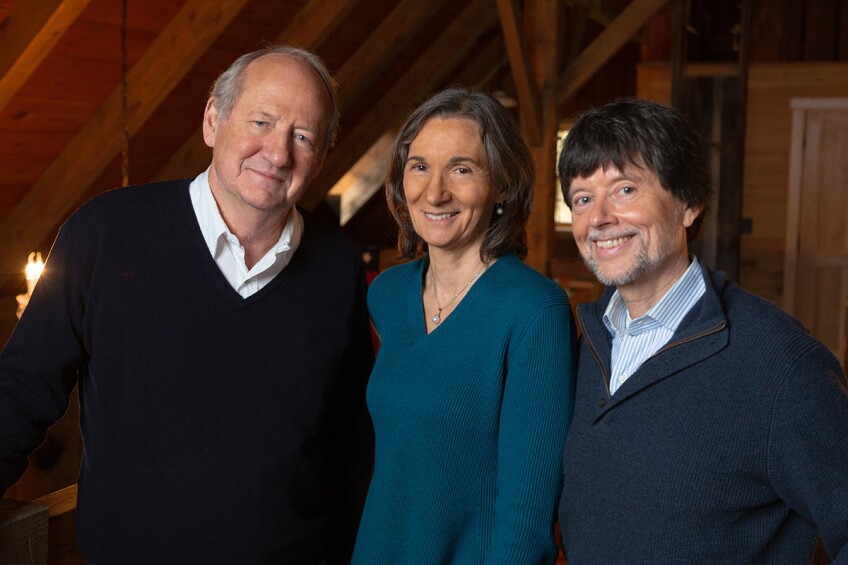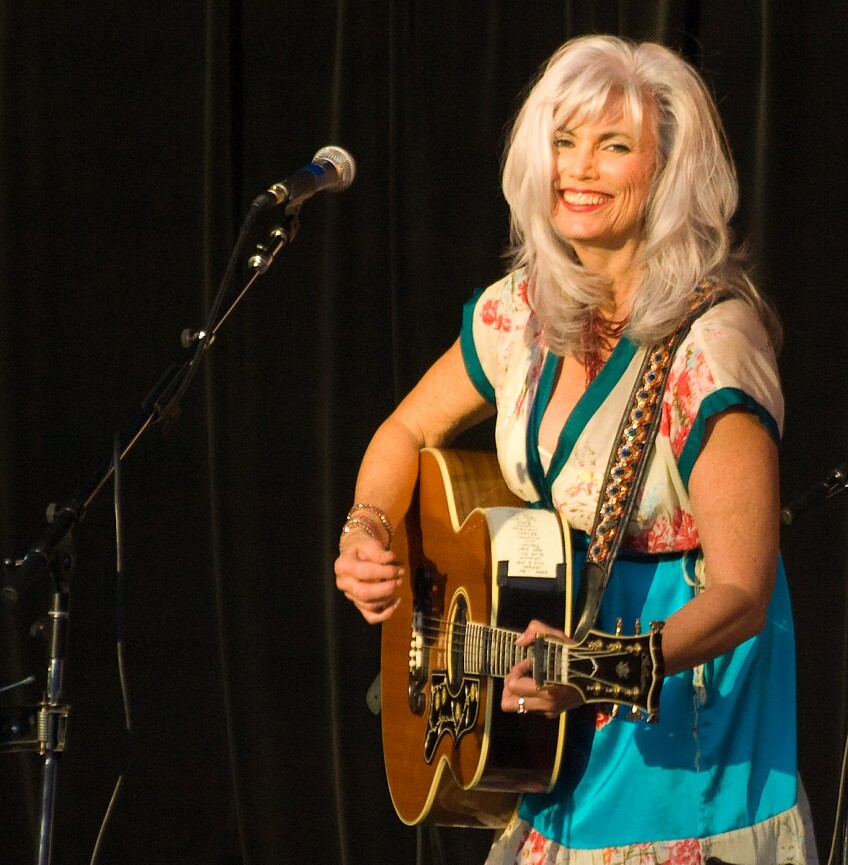Country Music, Quintessentially American and Immigrant: A Chat with Ken Burns and Dayton Duncan
Much is rightly made of the 1927 Bristol Sessions, aka the “big bang” of country music — the mapped juncture where, in Bristol, Tennessee, Victor Talking Machine Company talent scout Ralph Peer met and recorded the Carter Family, who came to be heralded as the first family of country music; and “Blue Yodeler” Jimmie Rodgers, later dubbed the father of country music. But rather than a big bang, what those sessions yielded is more accurately described as a hybrid — a new genre cultivated from an old tree rooted in numerous intertwined traditions and communities around the country, including Southern California.
Learn more about the places that gave birth to the different sounds of country in Ken Burns' "Country Music." Watch this clip.
That genre is the subject of Emmy-winning filmmaker Ken Burns’ eight-episode, 16-hour documentary “Country Music,” premiering Sept. 15 8/7c on PBS SoCal. Eight-and-a-half years in the making, the film was constructed from 175 hours of footage and 101 interviews conducted over eight-and-a-half years, including several key artists — Rosanne Cash, Rodney Crowell, Vince Gill, Merle Haggard, Emmylou Harris, Kris Kristofferson and Dwight Yoakam — whose music was launched in Southern California or influenced by their time here, and who helped expand the genre. The Maddox Brothers and Rose, the Byrds, the Nitty Gritty Dirt Band and Gram Parsons are also prominently featured.

Burns and longtime co-producers Dayton Duncan and Julie Dunfey affirmed country’s diverse origins during a July 27 roundtable interview at the Autry Museum of the American West in Los Angeles. “Everywhere,” the three insisted in near unison when asked where country music originated.
“It was principally in the South, but it was everywhere,” elaborated Duncan, who wrote the script and is also principal author of the companion book “Country Music: An Illustrated History,” due Sept. 10. The film, which ends around 1996, starts by tracing country’s history in 1923, when Peer recorded Fiddlin’ John Carson in Atlanta. But country’s roots “go back centuries to the British Isles, to Africa, to minstrel shows of the 1840s, gospel hymns, patent medicine shows … [it] was still being passed down, person to person and family to family,” Duncan said.
“Country music rose from the bottom up, from the songs Americans sang to themselves in farm fields and railroad yards, to ease them through their labors, and songs they sang to each other on the porches and in the parlors of their homes when the day’s work was done,” narrator Peter Coyote says in voiceover at the film’s beginning. “It came from the fiddle tunes they danced to on Saturday nights to let off steam, and from the hymns they chanted in church on Sunday mornings. It filtered out of secluded hollows deep in the mountains, and from smoky saloons on the edges of town; from the barrios along the southern border and from the wide-open spaces of the western range. Most of all, its roots sprang from the need of Americans, especially those who felt left out and looked down upon, to tell their stories.”
Country music remains quintessentially American in its foundation of rhythms and inherited tales of immigrants, and its everyman themes of family, work, identity, belief, love, and loss — “three chords and the truth,” as songwriter Harlan Howard famously described it.
Accusations of musical carpetbagging and “countrier than thou” purism have been flung around since country’s first pop crossover hit in 1925 (light opera singer Vernon Dalhart’s “The Prisoner’s Song”), and they’ve continued raging this year with Lil Nas X’s “Old Town Road.”
“[We’ve had] those arguments about what is country and what isn’t since the beginning, what’s genuine and what is not genuine,” Burns pointed out. “[In the 1950s and ’60s] they called it the Bakersfield Sound, because the Nashville Sound was now smooth, and the Bakersfield Sound was consciously rough in reaction. But the thing is, we ought not in our media culture to be caught in a binary dynamic.”
Learn more about Johnny Rodriguez, the first major Mexican American Country music star. Watch this clip from "Country Music."
Burns doesn’t just talk in intelligent paragraphs; he speaks in clearly annotated and punctuated chapters. That is a useful attribute when the subject at hand is “a very big, wide, diverse, complicated story.” He demurred when asked to define country music.
“We tend to segregate, through convenience or commerce or other reasons, country music into some category as if it’s a separate, distinct thing. One of the things the series tells you right away is it’s never been one thing … it coexists adjacent to all the other American music forms: adjacent to the blues, adjacent to rhythm & blues, adjacent to jazz and folk and rock and pop. And there’re no borders. None.
“The parents of rock are country and R&B, which means the blues. All the great early heroes of country music had an African-American mentor, whether it was A.P. Carter, Jimmie Rodgers, Bill Monroe, Hank Williams or Johnny Cash. Is that a good enough Mount Rushmore for you? All of them had an African-American tutor. The banjo is an African instrument.”
Hear Wynton Marsalis talk about black Country musicians in this clip from "Country Music."
Rhiannon Giddens, Haggard, Harris, Kristofferson, Dolly Parton, Charley Pride and Marty Stuart are among those offering soulful perspectives of country music onscreen. Fiddler Ketch Secor’s description of the music inspired the first episode’s title, “The Rub” — a phrase used to describe the rub of cultures and the resultant stylistic friction that developed when the fiddle and banjo met on plantations.

As Burns pointed out, the series covers a vital span of time that he’s explored in previous documentaries such as “The Dust Bowl,” “Prohibition,” “Baseball,” “The National Parks: America’s Best Idea” and “Jazz.” “Country music provides a lens through which we can see refracted much more than the history of a series of players and their songs,” he said. “It touches on everything that’s happened in the United States, certainly from the 1920s when it was first recorded up to now, but everything in between and several centuries back.”
Duncan eloquently referenced songwriters such as Guy Clark and Townes Van Zandt and the “art form” of songwriting. During a follow-up interview, we asked if while researching the film they were surprised by any backstories of individual songs. He cited one the Carter Family performed live in 1939 on a 500,000-watt border radio station in Del Rio, Texas; unbeknownst to their public, A.P. and Sara Carter had recently divorced.
“Sara had fallen in love with a cousin of A.P.’s by the name of Coy Bays,” Duncan explained. “The Bays family, to get away from the prickly situation, had moved to California over on the east shoulders of the Sierra Nevada. One night, on the border blaster station, Sara said, ‘I want to dedicate this next song to Coy Bays,’ because she hadn’t gotten a letter from him in two or three years. She starts singing ‘I’m Thinking Tonight of My Blue Eyes.’ In his small town in California, Coy Bays hears that — and starts talking to his mom and learns that he thought that Sara was not writing him because his mom had hidden her letters. Knowing that Sara still pined for him, he got in his car and drove all the way to Del Rio, Texas, and they got married.
“Later, that melody from ‘I’m Thinking Tonight of My Blue Eyes’ is also applied to a song called ‘The Great Speckled Bird,’ which Roy Acuff sang at his Grand Ole Opry debut. Later still, that same melody was applied to Hank Thompson’s great hit, ‘The Wild Side of Life’ … and then gets re-used one more time for the Kitty Wells answer song, ‘It Wasn’t God Who Made Honky Tonk Angels.’”
Kristofferson’s “Me and Bobby McGee,” Duncan observed, was inspired by a misunderstood title phrase from his publisher, and more deeply by Federico Fellini’s 1954 film “La Strada.”
Merle Haggard’s “Today I Started Loving You Again” started as a conversation. “Merle Haggard was standing at LAX after a grueling touring schedule with his wife Bonnie Owens, and he told her, ‘Today I started loving you again, I just finally had time to tell you so,’” Duncan recounted.

“Rosanne Cash’s first big hit, ‘Seven Year Ache,’ arose from an argument she had on Ventura Boulevard with her then-husband, Rodney Crowell, who was in California because [he was playing with] Emmylou Harris.”
“We had the idea for this in late 2010,” Burns said. “We’ve been working on it ever since, and we couldn’t predict all of the stuff that has happened. But it seems with almost every film that we’ve done there is a hunger for one of the messages. It’s all in the end about coming together, about unum and not pluribus, about us as well as the US. All of these things that seem kind of obvious but at the same time, particularly today, where we have found it seemingly easier to retreat to these tribal postures and instincts. In fact, we don’t actually like that; we like to sit together in church or at a ballpark. And we do know that everybody’s the same as us. And we do understand how interdependent we are on each other. And how incredibly fraudulent it is that we are being appealed to at the basest level rather than at the highest levels that we have.
“We need the universal truths that remind us that everybody’s in the same boat. None of us are getting out of this alive. As we watch the tendency to retreat to our tribal corners, there might be some medicine in these universal songs.”